Pure vanilla extract with grade b vanilla beans :from Bean to Bottle
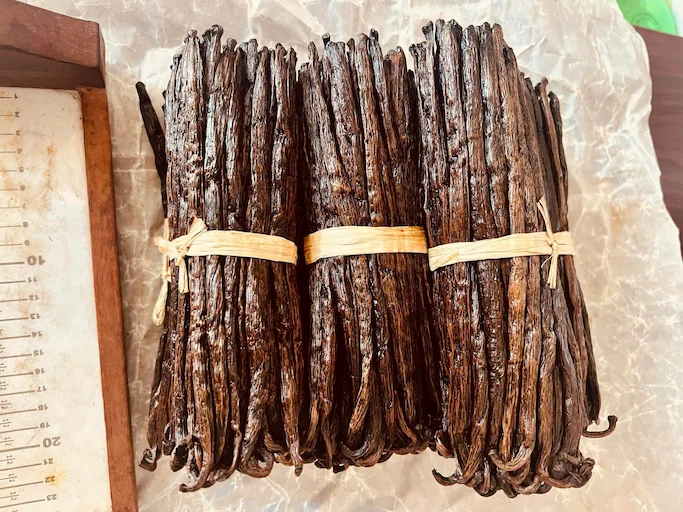
Imagine biting into a cookie, a cake, or a scoop of ice cream and instantly being transported to a world of flavor that’s both comforting and exotic.
That’s the magic of Madagascar vanilla beans—a single ingredient that can elevate any dish from ordinary to extraordinary.
But here’s the catch: not all vanilla is born equal. In a world flooded with artificial imitations, how do you capture the authentic essence of this incredible spice?
Welcome to your go-to guide for crafting the most aromatic, 100% pure, organic vanilla extract using Grade B Vanilla Beans.
Table of Contents
The Epic Journey of VanillaPure Vanilla Extract vs. Vanilla Flavor vs. Imitation Vanilla
How to Read Vanilla Labels
The Health Benefits of Using Pure Vanilla Extract
The Comprehensive Science Behind Vanilla Extraction
The Role of Alcohol in Vanilla Extraction
Crafting Alcohol-Free Vanilla Extract
Is Vanilla Extract Halal or Kosher?
The Unbeatable Advantages of Grade B Vanilla Beans
Understanding the “Fold” in Vanilla Extract
DIY Guide: Crafting Homemade Vanilla Extract
How to Know Your Vanilla Extract is Ready
How Long Does Pure Vanilla Extract Last?
The Unique Character of Madagascar Vanilla Extract
Nutritional Information for Madagascar Vanilla Extract
Understanding FDA Guidelines for “Vanilla Extract”
Conclusion
The Epic Journey of Vanilla: A Flavor That Conquered the World
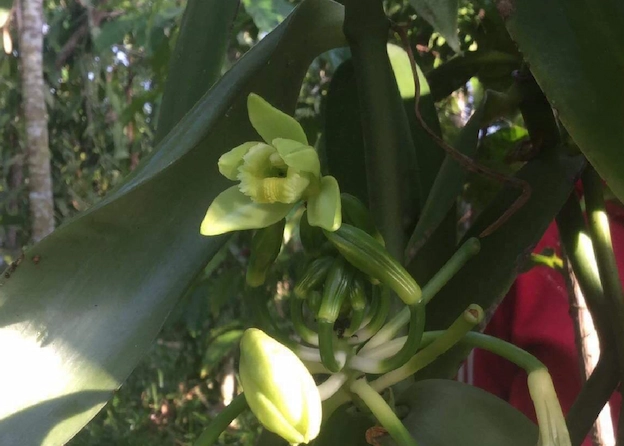
Picture this: a humble orchid in Mexico gives birth to a flavor that would conquer palates across continents.
That’s Vanilla Planifolia for you. While native to Mexico, it’s Madagascar that has become the modern-day mecca for vanilla lovers.
The beans from this island are meticulously harvested and cured, setting the stage for an extraction process that’s as much an art as it is a science.
Whether it’s a DIY project in your kitchen or a large-scale operation in a factory, the transformation of these beans into extract is nothing short of magical.
Pure Vanilla Extract vs. Vanilla Flavor vs. Imitation Vanilla:
The VanillaNice Breakdown
The Gold Standard: Pure Vanilla Extract
Imagine the aroma of pure vanilla extract wafting through your kitchen.
This is vanilla in its most authentic form. To earn the label “Pure Vanilla Extract,” it must contain 13.35% vanilla bean extractives, 35% alcohol, and the rest is distilled water.
Some may also contain sugar, corn syrup, or caramel color. When you opt for this, you’re choosing a flavor experience that’s as real as it gets.
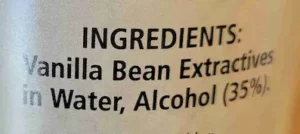
The Shortcut: Imitation Vanilla
Now, consider imitation vanilla. It’s synthetic vanillin made in a lab.
While it’s safe to consume, it lacks the complexity and depth that you get from pure vanilla extract. It’s a shortcut that might save you money but will cost you in flavor.
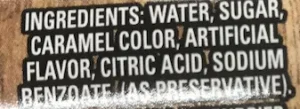
The Compromise: Vanilla Flavor
Vanilla flavor is a middle-of-the-road option.
It’s made with the required amount of vanilla bean extractives but swaps out alcohol for propylene glycol or glycerin .
While it captures some of vanilla’s essence, it misses out on the full spectrum of flavors that only alcohol can extract from the bean
The Newcomers: WONFs and Natural Vanilla Extracts
WONFs, or “With Other Natural Flavors,” are a recent market addition due to the high cost of vanilla.
They sometimes contain synthetic vanillin.
Natural Vanilla Extracts are blends of pure vanilla extract and natural flavors from plants other than vanilla.
They offer a different kind of complexity but can’t quite match the original.
Your Quick Guide: How to Read Vanilla Labels
The label isn’t just text; it’s your roadmap to a world of flavor.
Look for phrases like “Single-Fold” or “Double-Fold.” These aren’t just words; they’re indicators of vanilla richness.
Spot any added sugars or syrups? They could dilute that magical flavor you’re after. And if you see the origin, like Madagascar, you know you’re holding a bottle of something extraordinary
The Health Benefits of Using Pure Vanilla Extract
Believe it or not, vanilla extract isn’t just a flavor enhancer; it’s also packed with antioxidants and anti-inflammatory properties. So, not only does it make your food taste better, but it also adds a nutritional punch.
The Comprehensive Science Behind Vanilla Extraction: More Than Just Vanillin
Vanilla extraction is a multifaceted process that goes beyond the well-known compound of vanillin.
While vanillin is a key player, the extraction process also captures a range of other aromatic compounds that contribute to vanilla’s complex flavor profile.
And when you’re using Grade B Madagascar vanilla beans , you’re starting with the best raw material possible.
The Role of Alcohol in Vanilla Extraction
While alcohol is a common solvent in vanilla extraction, the type of alcohol used can dramatically influence the final flavor profile of the extract. From the neutrality of vodka to the complexity of rum, each alcohol brings its own unique touch to the table.
Vodka: The Neutral Canvas
Vodka: The Neutral Canvas
Vodka is often the go-to choice for vanilla extract, and for good reason.
Its neutral flavor lets the complex aromas of Grade B vanilla beans take center stage.
But did you know the quality of vodka can vary based on the number of distillations and the type of grain used?
So, while it’s versatile and ideal for both sweet and savory dishes, don’t overlook the vodka’s quality. The better the vodka, the purer your vanilla extract.
Rum: A Touch of Complexity
Rum isn’t just for pirates; it’s a treasure in the vanilla extract world too.
The inherent flavors of molasses and caramel in rum add a layer of complexity that’s hard to resist.
And get this: you can choose between white, dark, and gold rum depending on the depth of flavor you’re after.
White rum is lighter and brings out the vanilla’s sweetness, making it perfect for desserts like bread pudding or panna cotta.
Bourbon: The American Twist
If you’re looking for a vanilla extract with a distinctly American vibe, Bourbon is your go-to.
Its smoky, oaky notes add a unique depth that’s a hit in recipes like Bourbon vanilla ice cream or rich, fudgy brownies.
But here’s a tip: Bourbon is slightly sweeter than vodka but not as sweet as rum, striking a balance that’s just right for those who like a little edge to their sweetness.
Brandy: The European Elegance
Ah, brandy. The European sophisticate of the alcohol world.
Its fruity undertones and warming finish make it a luxurious option for fine pastries and desserts.
Paired with the floral notes of Madagascar vanilla beans , it’s like a European vacation in a bottle.
Crafting Alcohol-Free Vanilla Extract: A Flavorful Alternative
For those who prefer to avoid alcohol, there are alternative methods to capture the essence of Grade B Madagascar vanilla beans.
Glycerin is a popular choice, offering a sweet, alcohol-free base that still effectively extracts the aromatic compounds from the vanilla bean.
Glycerin-Based Extracts: The Slow and Steady Approach
Unlike alcohol, which can wrap up the extraction process in a quick eight weeks, glycerin is more of a slow burn.
You’re looking at several months to achieve a flavor profile that can go toe-to-toe with its alcohol-based counterpart.
If you’re curious about diving into glycerin-based vanilla extract, there are some solid recipes available, like the one you can find here.
Vinegar and Water: The Less Common Choices
While not as popular as alcohol or glycerin, vinegar and water can also serve as solvents for vanilla extraction.
Though generally less efficient and yielding a milder flavor, these options may be suitable for specific culinary applications, such as use in French recipes like vanilla vinaigrette
Is Vanilla Extract Halal or Kosher? Navigating Dietary Restrictions
The Halal or Kosher status of vanilla extract is a crucial consideration for many. While alcohol-based extracts are generally not Halal or Kosher, there are certified options available for those who follow these dietary laws.
Halal-Certified Vanilla Extract
For an extract to be considered Halal, it must be alcohol-free and the vanilla beans must be processed without the use of any animal by-products. Glycerin-based extracts are a popular Halal option.
Kosher-Certified Vanilla Extract
Similarly, Kosher vanilla extract must meet strict guidelines, including the absence of any non-Kosher additives. Alcohol can be used in Kosher extracts, but it must be Kosher-certified. Glycerin-based extracts are also commonly used for Kosher vanilla extract
An Alternative to Alcohol-Free Extracts
For those who prefer an even simpler, alcohol-free option, consider using Vanilla Bean Powder as an alternative. You can find premium quality Vanilla Bean Powder available at VanillaNice.
The Unbeatable Advantages of Grade B Vanilla Beans
When it comes to vanilla extraction, not all beans are created equal.
Grade B vanilla beans , often referred to as “extraction-grade,” offer a range of advantages that make them the ideal choice for creating rich, flavorful vanilla extract
Cost-Effectiveness Without Compromising Quality
One of the most compelling reasons to opt for Grade B vanilla beans is their cost-effectiveness. These beans may not have the aesthetic appeal of Grade A beans, but they pack just as much flavor, making them a budget-friendly option for extraction.
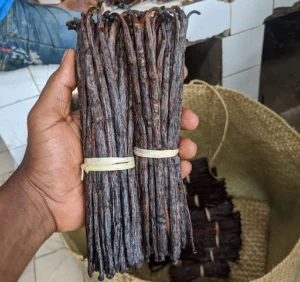
The Economic Benefits of Choosing Grade B
By opting for Extract-grade vanilla beans, you’re making a financially savvy choice without sacrificing flavor. This makes it easier to produce vanilla extract in larger quantities, whether for personal use or for sale.
Lower Moisture Content, Higher Flavor Concentration
Grade B vanilla beans have a lower moisture content compared to their Grade A counterparts. This allows for a more concentrated flavor extraction, capturing the true essence of Madagascar vanilla.
The Science Behind Moisture Content and Flavor
The lower moisture content means that the beans are more porous, allowing the solvent to penetrate more deeply and extract a wider range of aromatic compounds.
Sustainability and Ethical Considerations
Grade B vanilla beans are often more sustainably sourced and contribute to less waste in the vanilla industry.
By choosing Grade B, you’re making an ethical choice that supports sustainable farming practices
Understanding the "Fold" in Vanilla Extract
In the world of vanilla extract, the term “fold” is used to indicate the concentration or strength of the extract. A single-fold (1X) vanilla extract is the standard concentration, typically achieved by percolating 13.35 ounces of vanilla beans with one gallon of a 35% alcohol solution. Higher fold numbers like 2X, 3X, etc., represent a more concentrated form of vanilla extract.
Why Does the Fold Matter?
The fold of a vanilla extract impacts not just its strength but also its suitability for different culinary applications. Higher-fold extracts are generally used in industrial settings where a more potent flavor is required in large-scale food production.
How to Determine the Fold of Your Homemade Extract
When making vanilla extract at home using Grade B Madagascar vanilla beans, you can control the fold by adjusting the ratio of vanilla beans to alcohol. More beans will result in a higher fold, meaning a more concentrated and robust flav
Vanilla Extract Conversion Chart According to FDA Guidelines
| Fold | Vanilla Quantity (oz) | Alcohol Quantity (US gal) | Common Uses |
|---|---|---|---|
| 1-Fold | 13.35 oz | 1 US gal | Home cooking, general baking |
| 2-Fold | 26.7 oz | 1 US gal | Commercial baking, ice creams |
| 3-Fold | 40.05 oz | 1 US gal | Industrial food production |
DIY Guide: Crafting Homemade Vanilla Extract with Grade B Vanilla Beans
What You’ll Need:
- Approximately 13.35 ounces (around 378.5 grams) of Grade B Vanilla Beans from VanillaNice
- 1 gallon (about 3.8 liters) of a 35% alcohol solution (vodka, rum, or bourbon)
- Large glass jars with airtight lids
- Funnel
- Cheesecloth or fine mesh strainer
- Bottles for packaging (4 oz size recommended)
- Labels for branding
Step-by-Step Guide:
- Preparation: Start by splitting the vanilla beans lengthwise to expose the inner seeds. This helps in better extraction.
- Jar It: Place the split beans into large glass jars.
- Pour the Alcohol: Using a funnel, pour the alcohol over the beans, making sure they are completely submerged.
- Seal and Store: Seal the jars tightly and stash them in a cool, dark place.
- Shake It Up: For the first week, give those jars a good shake once a day to help mix the beans with the alcohol.
Speeding Up the Process
While the traditional method requires at least 8 weeks, some claim that gently warming the alcohol before pouring can help speed up the extraction. However, this is a topic of debate and could potentially alter the flavor profile.
Why 1-Fold?
1-fold is the industry standard and is versatile enough for both home and commercial use. It’s also the concentration most recipes are based on.
Ready to Take It to the Next Level?
So you’ve got the basics down, and you’re feeling like a vanilla wizard.
Time to scale up! With Grade B Vanilla Beans from VanillaNice, you’re already ahead of the game.
But here’s a pro tip: to really optimize your costs, consider going for vanilla beans in bulk .
Mix Grade B with Grade C vanilla beans, and you’ve got yourself a cost-effective, yet still 100% natural , vanilla extract that’ll make your brand shine even brighter
How to Know Your Vanilla Extract is Ready
The Eye Test
First off, give that jar a good look. If you used a light spirit like vodka, it should be a beautiful amber color. If you went for something darker like bourbon, it’ll be much darker, but that’s okay.
The Sniff Test
Next, take a whiff. You should get a strong hit of vanilla before the alcohol. If it’s the other way around, you might want to let it sit a bit longer.
The Taste Test
Now, for the moment of truth. You could go the cowboy route and taste it straight, but remember, this stuff is potent. A more refined approach? Mix a couple of drops with some milk, let it sit for a few minutes, and then take a sip. If vanilla is the star of the show, you’re golden.
Party Time!
Why not make an event out of it? Invite some friends over for a vanilla extract tasting party. It’s a fun way to get second opinions and maybe even some new recipe ideas.
How Long Does Pure Vanilla Extract Last?
Ah, the million-dollar question! Good news: pure vanilla extract is like the fine wine of the spice world—it ages gracefully.
When stored in a cool, dark place and sealed tightly, it can last indefinitely.
That’s right, it’s virtually immortal! However, for the best flavor, aim to use it within five years.
After that, the flavor might start to diminish, but it’ll still be safe to use. So, go ahead and make a big batch; you don’t have to worry about it going bad anytime soon.
Madagascar Vanilla Extract
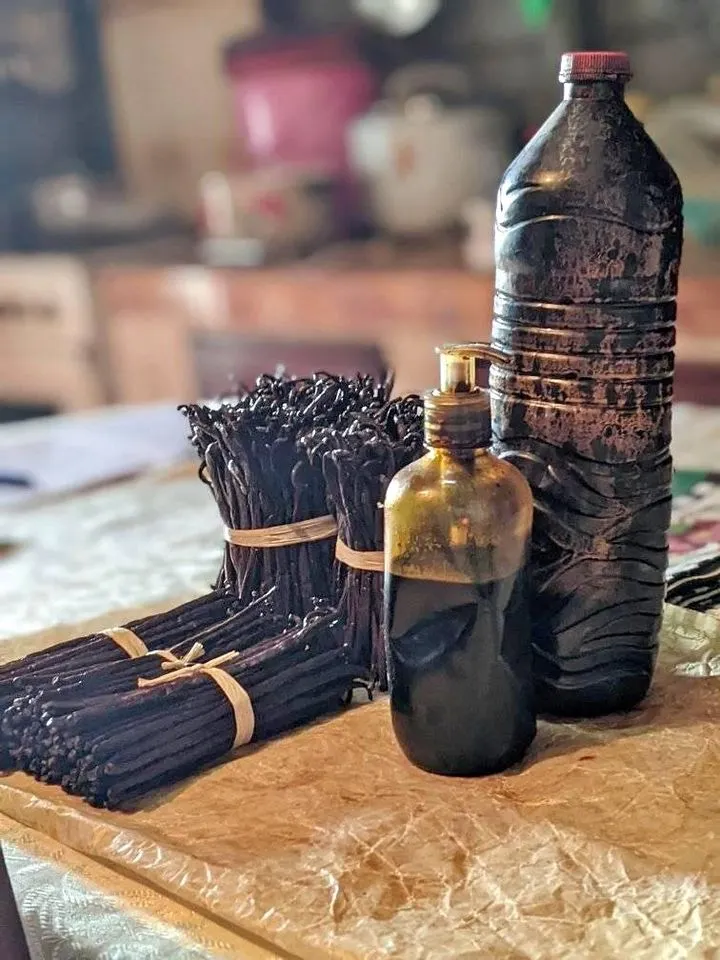
The Unique Character of Madagascar Vanilla Extract: More Like Vanilla Bean Paste
If you ever find yourself in the beautiful island nation of Madagascar, you’ll quickly realize that the local vanilla extract is unlike anything you’ve encountered in international markets.
Here, the extract closely resembles what most would call Vanilla Bean Paste—it’s dark, viscous, and incredibly aromatic.
Why It’s Different
The Madagascar Vanilla Extract is a rich, black liquid that’s thicker than your typical extract.
This is because it’s often less filtered, allowing for a more concentrated flavor and a higher content of vanilla bean particles.
It’s almost like having the best of both worlds— the intense flavor of an extract and the visual appeal of vanilla seeds, all in one.
The Science Behind It: Vanillin Content
We’ve conducted a series of analyses to quantify the vanillin content in Madagascar Vanilla Extract, and the results are nothing short of impressive. The high vanillin levels contribute to its robust flavor, making it a premium choice for those who are serious about their vanilla.
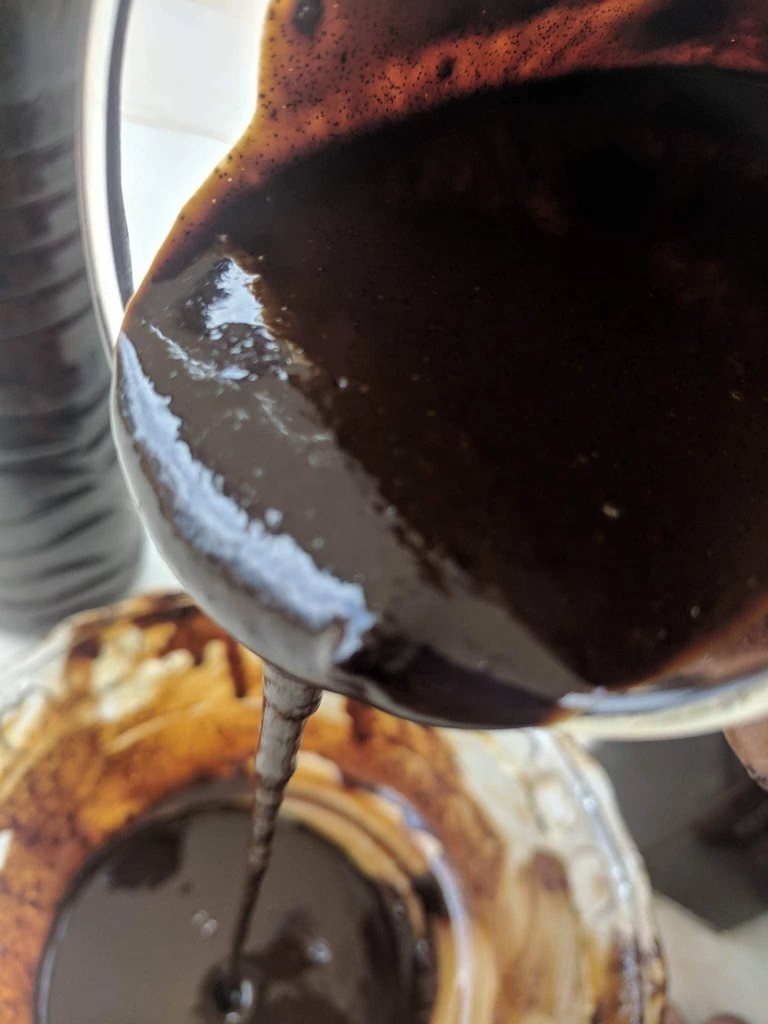
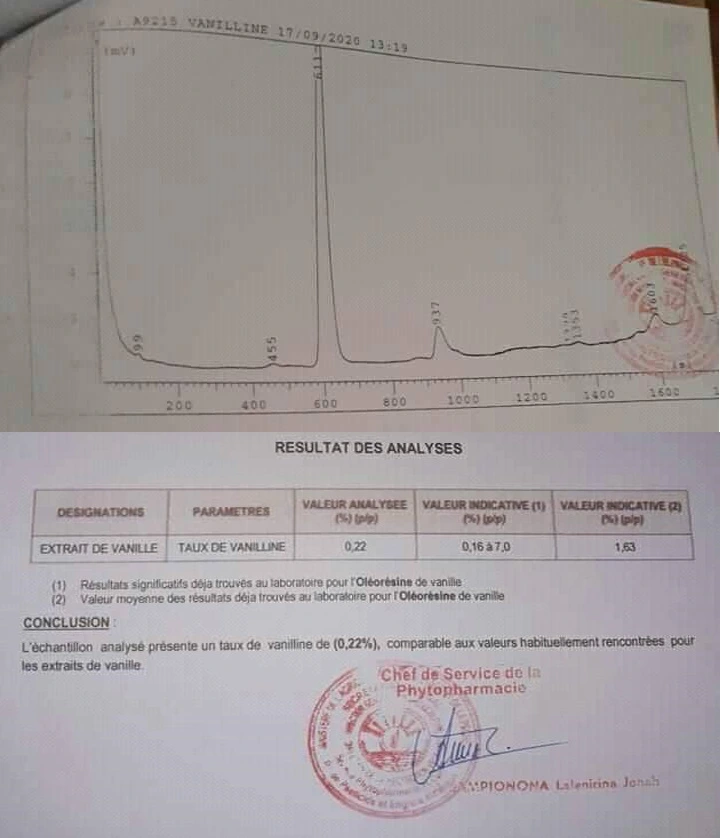
The Versatility of Madagascar Vanilla Extract
Because of its unique consistency, Madagascar Vanilla Extract—or should we say, Vanilla Bean Paste— is incredibly versatile.
It can be used in a variety of recipes, from baked goods to ice creams, without losing its rich flavor or visual appeal.
Vanillin Content Variations: From Extract to Oleoresin
The vanillin content in Madagascar Vanilla Extract can vary significantly, ranging from 0.3 to 7.
Products with higher vanillin content are locally known as vanilla oleoresin or vanilla essential oils, while those with lighter vanillin content are typically called vanilla extract.
Special Orders for Madagascar Vanilla Extract
If you’re looking to make a special order of Madagascar Vanilla Extract, we’ve got you covered.
Whether you’re a chef, a food manufacturer, or simply a vanilla enthusiast, we can accommodate orders of all sizes and specifications.
Our team is dedicated to ensuring that you get the highest quality vanilla, tailored to your needs.
For special orders and bespoke solutions, don’t hesitate to contact us. We’re here to make your vanilla dreams come true.
Nutritional Information for Madagascar Vanilla Extract
If you’re mindful of your diet, here’s some nutritional information for Madagascar Vanilla Extract. The values are per 100 grams:
| Nutrient | Value |
|---|---|
| 🔹Calories | 288 |
| 🔹Fats | 0.1g |
| 🔹Cholesterol | 0mg |
| 🔹Sodium | 9mg |
| 🔹Potassium | 148mg |
| 🔹Carbohydrates | 13g |
| 🔹Protein | 0.1g |
Understanding FDA Guidelines for “Vanilla Extract”
Planning to sell your homemade vanilla extract? Make sure you’re compliant with FDA standards. Here’s what you need to know:
- What Qualifies as Vanilla Extract
- Essential Components
- Naming Rules
- Usage of the Term “-Fold”
- Proportion of Vanilla Beans to Alcohol
- Minimum Alcohol Proof
- Allowed Additional Ingredients
- Labeling Guidelines
- Moisture Content in Vanilla Beans
Helpful FDA Resources for More Information
- Terminology
- Vanilla Extract Criteria
- Concentrated Extract Standards
- Vanilla Flavoring Specs
- Concentrated Flavoring Rules
Before you start labeling and selling, make sure you’ve got all these bases covered. Better safe than sorry!
Conclusion: The Vanilla Alchemy—Crafting the Essence of Flavor
In a world where shortcuts and imitations are abundant, the art of crafting pure, organic vanilla extract stands as a testament to culinary excellence. From the humble orchids of Mexico to the rich soils of Madagascar, the journey of vanilla is a tale of global fascination and flavor.
Choosing Grade B Vanilla Beans for your extract is not just a cost-effective decision; it’s a commitment to quality, sustainability, and ethical farming practices. Whether you’re a home cook or an entrepreneur looking to scale, these beans offer a robust flavor profile that’s second to none.
The role of alcohol in the extraction process is not to be overlooked. From the neutrality of vodka to the complexity of rum, the choice of alcohol can be your personal signature on the final product. And for those who prefer an alcohol-free route, options like glycerin-based extracts or Vanilla Bean Powder offer flavorful alternatives without compromising on quality.
Understanding the FDA guidelines and the concept of “fold” in vanilla extract ensures that you’re not just making a delicious product but also one that meets industry standards. This is especially crucial if you’re planning to take your vanilla extract to market.
So, whether you’re a culinary enthusiast looking to elevate your recipes or a business owner aiming to produce high-quality vanilla extract for sale, this guide has equipped you with the knowledge you need. The next step? Get your hands on some Grade B Vanilla Beans and start crafting your own liquid gold.
Remember, the essence of vanilla is not just a flavor; it’s an experience, a tradition, and a passion. Happy extracting!
And don’t forget to shopping Madagascar vanilla beans


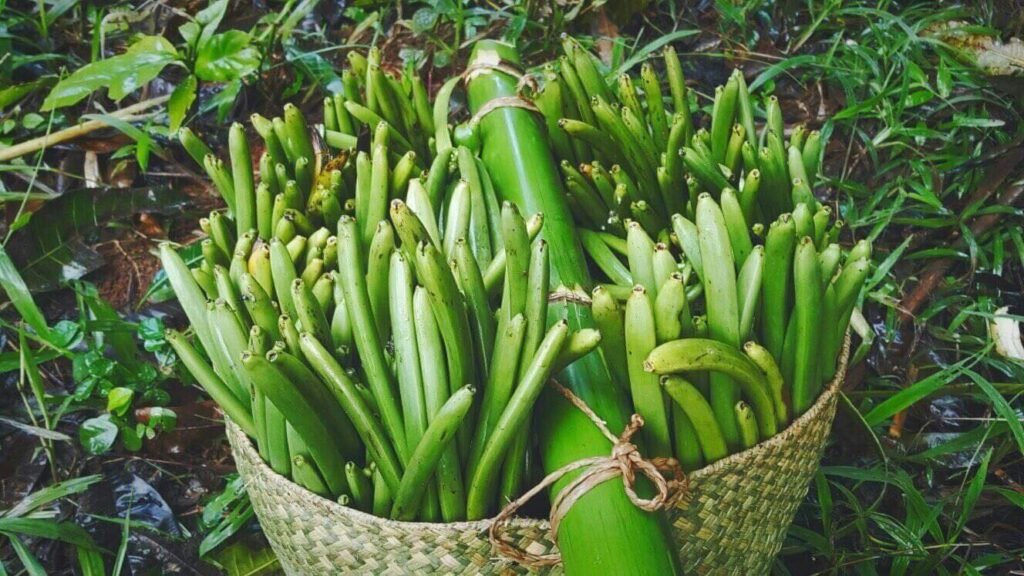
Pingback: Vanilla Bean Grades - Vanillanice.com | Madagascar Vanilla-7